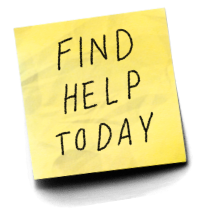Frequently Asked Questions about Naloxone
What is naloxone?
Naloxone is a life-saving medication that can reverse an overdose from opioids—including heroin, fentanyl, and prescription opioid medications—when given in time.1
There are two forms of naloxone that anyone can use without medical training or authorization:
- Nasal spray – Prefilled devices that spray medication into the nose.
- Injectable – Medication (solution) given by injection into a muscle or under the skin.
How much does naloxone cost and where can I get it?
The cost varies depending on where you get the naloxone, how you get it, and what type you get. Check with your insurance provider to see if naloxone is covered under your plan. Community-based organizations and local health departments may offer naloxone at little to no cost.
Naloxone is available in all 50 states and at pharmacies in most states without a prescription. Healthcare professionals can co-prescribe naloxone with high-dose opioids. Your state and local health departments or community-based organizations may offer a naloxone locator on their website.
Can I use naloxone on myself?
No, naloxone is administered to someone after an overdose has occurred. Because the individual who overdosed is likely unconscious and/or their movement and breathing are restricted, they would need assistance.
Can naloxone prevent an overdose?
No, naloxone cannot be taken prior to using drugs to prevent an overdose.
Is naloxone addictive?
No, naloxone is safe to use and is not addictive2.
Is naloxone easy to use?
Yes, naloxone is easy to use and medical training is not required. Check out CDC’s videos on how to use naloxone nasal spray and how to use injectable naloxone.
How many doses of naloxone do I need to give if someone is overdosing?
Naloxone is a fast-acting drug that can reverse opioid overdose and restore normal breathing within 2-3 minutes.3 Additional doses of naloxone may be needed for larger quantities of opioids or more potent opioids, like fentanyl. If the person who has overdosed remains unresponsive, keep giving additional doses (if available) until they’re alert or until emergency assistance arrives.
What to do if you think someone is overdosing:
- Call 911 immediately.*
- Administer naloxone, if available.
- Try to keep the person awake and breathing.
- Lay the person on their side to prevent choking.
- Stay with the person until emergency assistance arrives.
*Most states have laws that may protect a person who is overdosing or the person who called for help from legal trouble.
Does naloxone have side effects?
Naloxone can (but does not always) cause withdrawal symptoms or unpleasant physical reactions, in people who are physically dependent on opioids. Withdrawal symptoms may include fever, anxiety, irritability, rapid heart rate, sweating, nausea, vomiting, and tremors.
Is naloxone harmful?
Naloxone won’t harm someone if they’re overdosing on opioids or other drugs, so it’s always best to use it if you think someone is overdosing.
Can anyone carry naloxone?
Yes, anyone can purchase and/or carry naloxone to help respond to an overdose. It is not just for people with an opioid or other substance use disorder. Having naloxone available allows bystanders to help save lives by preventing a fatal overdose.
- Life-Saving Naloxone from Pharmacies. (2019). Centers for Disease Control and Prevention. https://www.cdc.gov/vitalsigns/naloxone/index.html
- https://www.asam.org/docs/default-source/public-policy-statements/use-of-naloxone-for-the-prevention-of-opioid-overdose-deaths-final.pdf – page 1
- SAMHSA. SAMHSA Opioid Overdose Prevention Toolkit. 2018; Available from: https://store.samhsa.gov/system/files/sma18-4742.pdf

